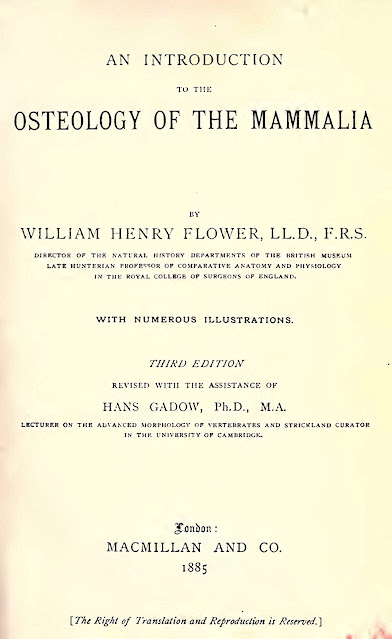Fragment from the book Flower WH. An Introduction to the Osteology of the Mammalia (1885). The author notes the presence of the ligamentum capitis femoris (LCF) in almost all mammals and lists the species in which it is absent.
Quote p. 328
In nearly all Mammals there is a rounded depression near the middle of the surface of the head into which the Ligamentum teres of the hip-joint is inserted. Both ligament and depression are, however, wanting in the Orang Utan, Seals, the Sea-Otter, Elephant, Sloths, Wombat, and the Monotremata.
External links
Flower WH. An
Introduction to the Osteology of the Mammalia. 3th ed. London: Macmillan &
Co, 1885. [archive.org]
Authors & Affiliations
William
Henry Flower (1831-1899) was an English surgeon, museum curator and comparative
anatomist, Hunterian Professor of Comparative Anatomy. [wikipedia.org]
 |
| Sir William Flower (1904) Author C. J. Cornish; original in the wikimedia.org collection (CC0 – Public Domain, color correction) |
Keywords
ligamentum capitis femoris, ligamentum
teres, ligament of head of femur, anatomy, mammals, animals,
absence
NB! Fair practice / use: copied for the purposes of criticism, review, comment, research and private study in accordance with Copyright Laws of the US: 17 U.S.C. §107; Copyright Law of the EU: Dir. 2001/29/EC, art.5/3a,d; Copyright Law of the RU: ГК РФ ст.1274/1.1-2,7


Comments
Post a Comment